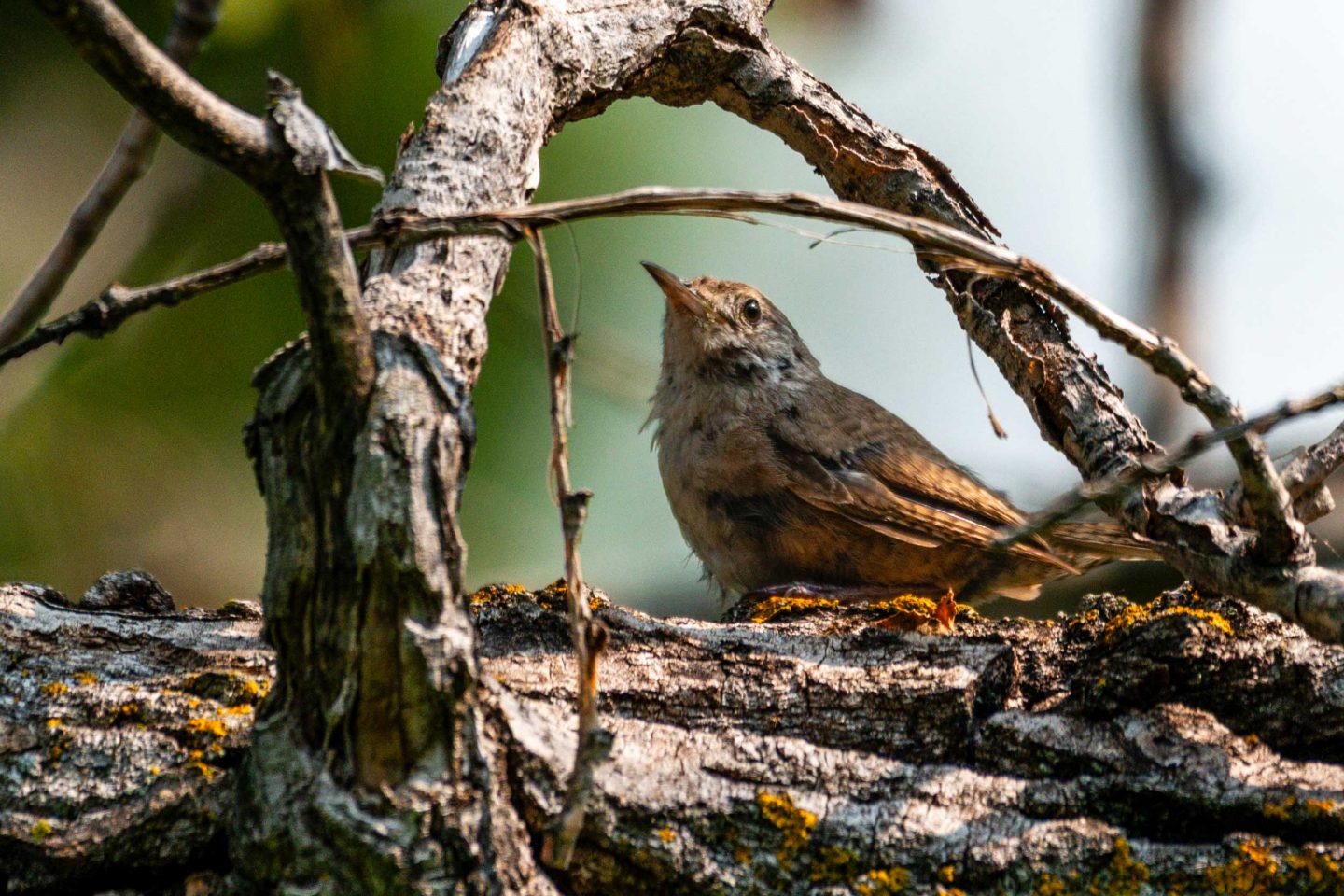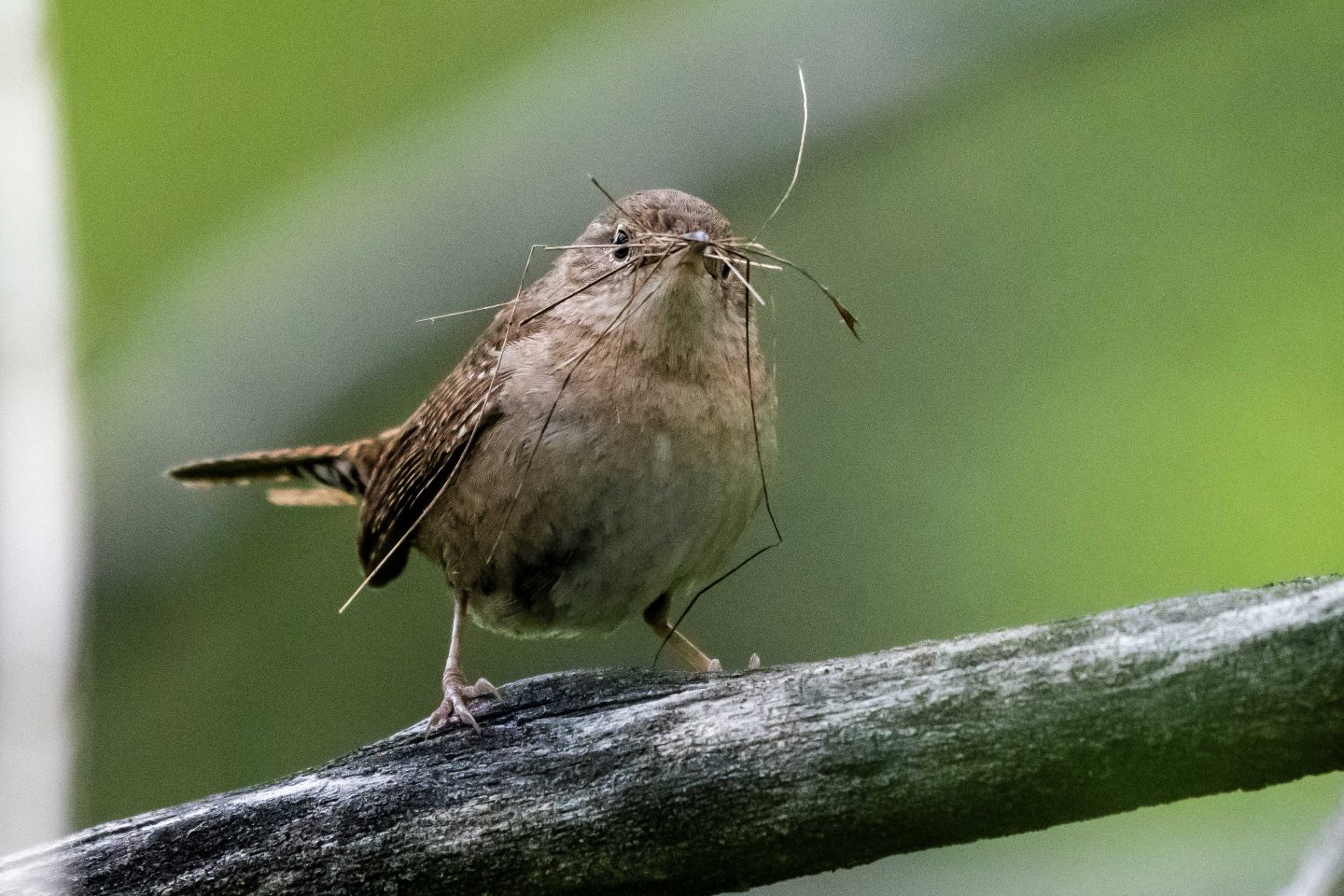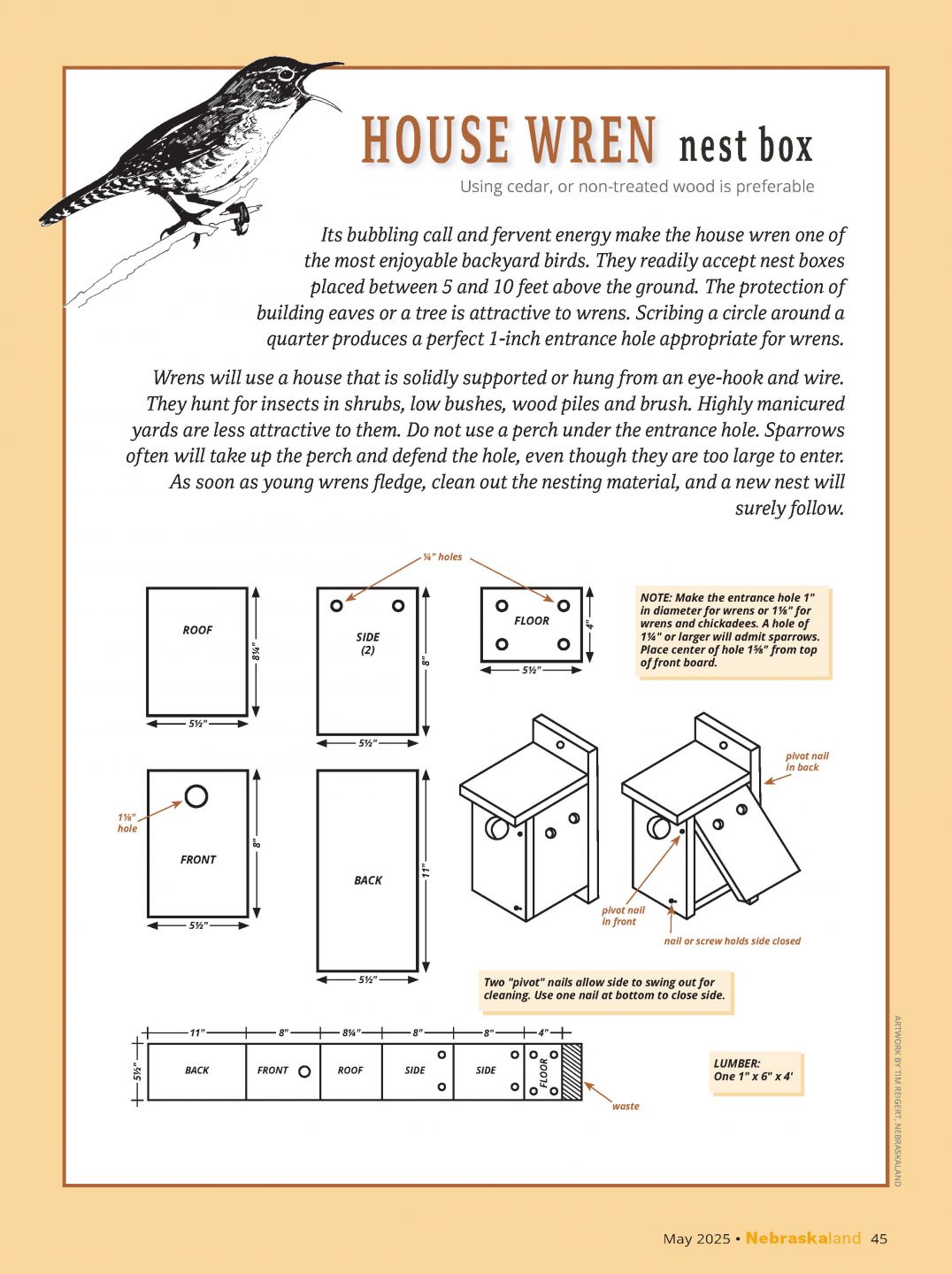
Story and photos by Justin Haag
The northern house wren (Troglodytes aedon) presents remarkable gusto in a small package.
The tiny, energetic bird, with its inconspicuous brownish-gray plumage, is the most common of at least nine wren species observed in Nebraska. It quickly flits among dense vegetation as it feeds on small invertebrates such as millipedes, spiders and snails. It’s often heard before seen, making its loud, chattering, exuberant call that seems impressive for such a small animal to make. It’s a lot of music coming from a bird weighing about half an ounce and measuring just 5 inches long.
House wrens have an expansive breeding range, spanning across the northern United States and into Canada at locations from sea level to elevations of 10,000 feet. After the wrens spend winter in the southern United States and Mexico, nesting season occurs from late April through July. Females usually produce one or two broods, but sometimes produce as many as four, as one Scottsbluff birdwatcher observed.

The male of the species is especially busy early in nesting season when he’s trying to impress the female with his ability to choose and develop prime real estate. The wren is an opportunistic cavity nester that uses old woodpecker holes, fabricated boxes and about any other hole they can find. At multiple locations, the male wren collects and piles twigs in the cavities, topped with a soft bed of grass or other small fibers. If he does a suitable job, the female chooses one of the sites for laying eggs and raising young with him.
In finding locations, wrens often fiercely compete with other birds, such as house sparrows and starlings. Wrens sometimes evict other bird species from cavities and destroy their eggs if they find a place they want.
The “northern” part of the name is new. In 2024, ornithologists split house wrens into two species. Those ranging from southern Mexico southward are now known as the southern house wren (Troglodytes musculus). While numerous subspecies of the northern house wren have been distinguished, all in Nebraska are Troglodytes aedon parkmanii.

While the house wren may have suffered population declines in the 20th century with the introduction of the house sparrow to North America, its population appears to be stable now.
House wrens were named for their tendency to nest near homes and in birdhouses, so they’re an ideal backyard species. People can attract house wrens by installing nest boxes. Position them facing east about 5 feet off the ground near the edge of a wooded area. The birds are drawn to trees, shrubs and brush piles that provide both cover for them and habitat for insects they like to eat.

